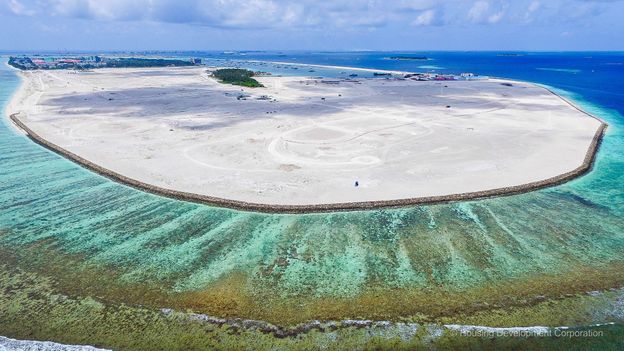The Maldives offers a beautiful tropical getaway for travelers from all over the world.
Those who fly from different parts of the world can enjoy the perfect coral atolls with white sand, luxury resorts and world-class water sports.
But unfortunately, the Maldives is one of the places facing environmental threats in the world.
Its luxury beach resort may be world-famous, but with more than 80% of the 1,200 islands scattered less than 1m above sea level, rising oceans threaten its existence.
But the Maldivians are determined to fight back in order to maintain their existence.
Back in 2008, then president Mohamed Nasheed made global headlines by announcing plans to buy land elsewhere so residents could move if islands were submerged.
The plan provides a way of considering whether it is better to work at sea than to fight it, by building on floating urban developments – as has been done in cities like Amsterdam.
Instead, the Maldives turned to a different form of geo-engineering: creating a 21st-century city, dubbed the “City of Hope”, on a new artificial island called Hulhumale.
Prior to Covid, curious tourists could visit the new island city that formed about 8 km from the capital Malé by taking a 20-minute bus from the airport via the bridge.
Apart from the threat of drowning in the long term, increased coastal erosion also threatens 70% of the infrastructure – houses, buildings and other utilities – located within 100m of the current coastline.
There are also concerns about encroaching salt seas contaminating valuable freshwater sources, plus the risk posed by unpredictable natural disasters, such as the 2004 tsunami that killed more than 100 people in the Maldives.
Hulhumalé eventually is hoped to host up to 240,000 people in a well-designed style by the mid-2020s.
This vision includes a diverse mix of quality housing, new employment opportunities plus open recreational space three times larger per person than Malé.



